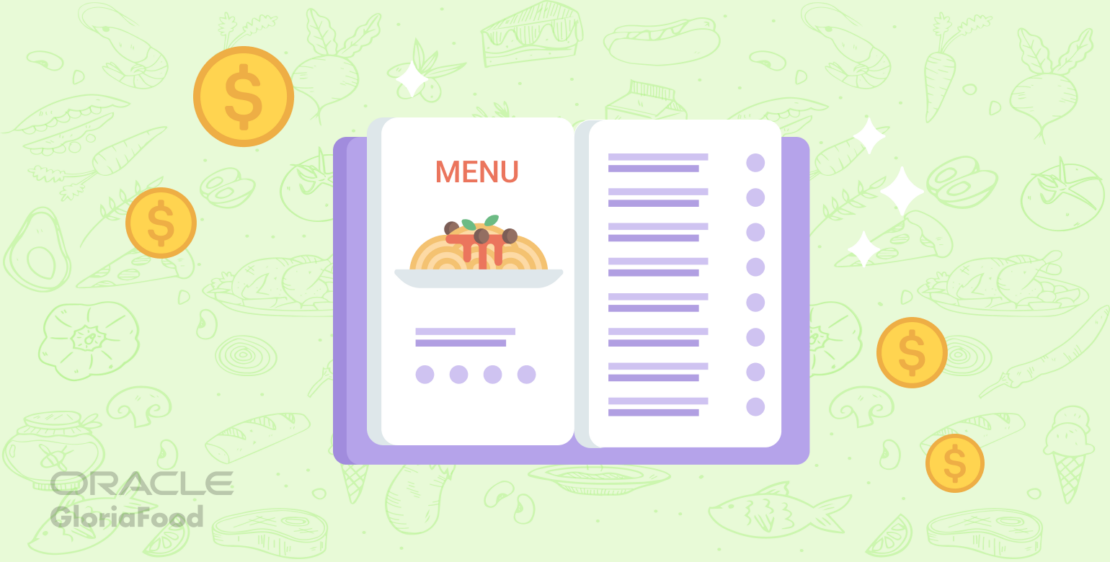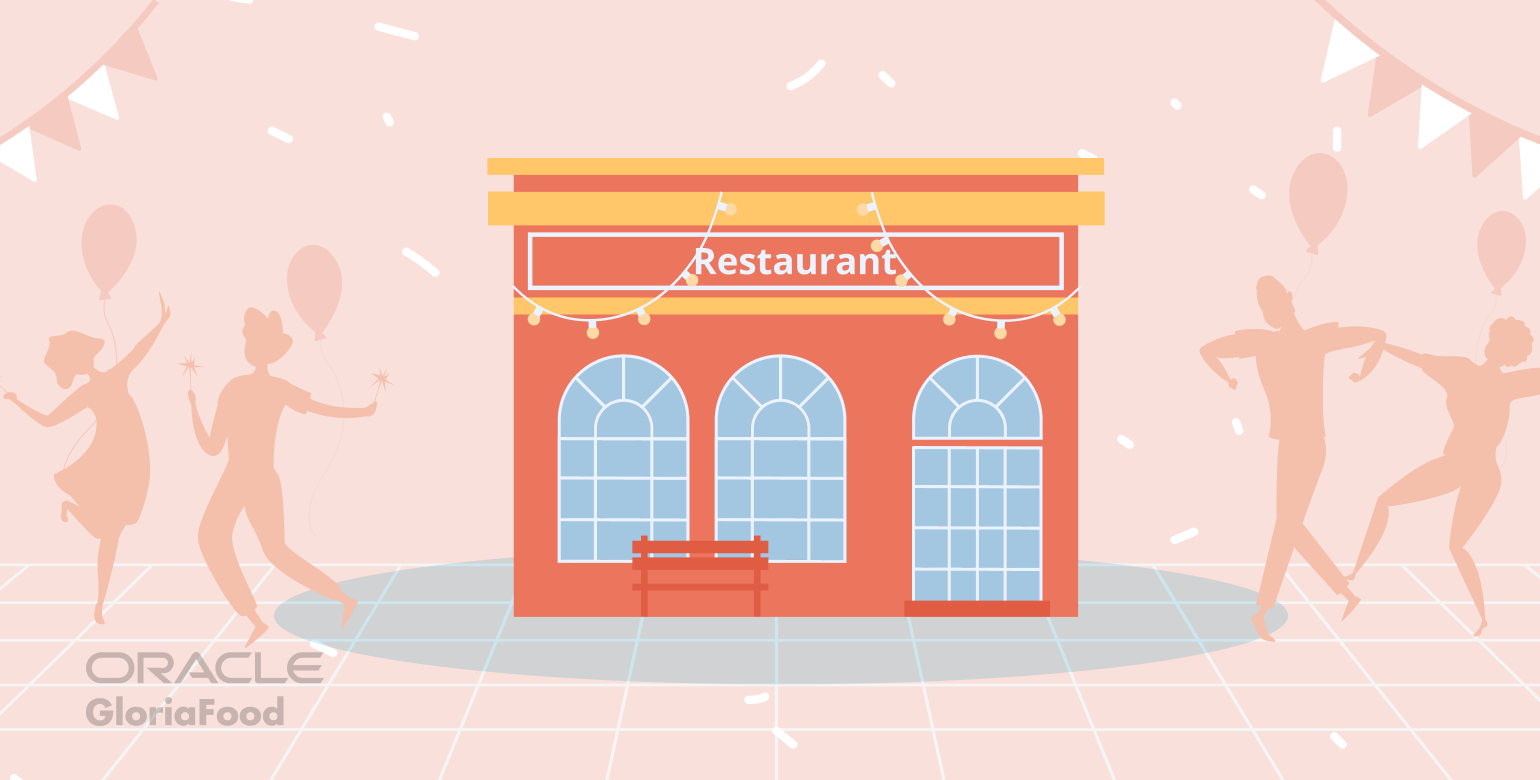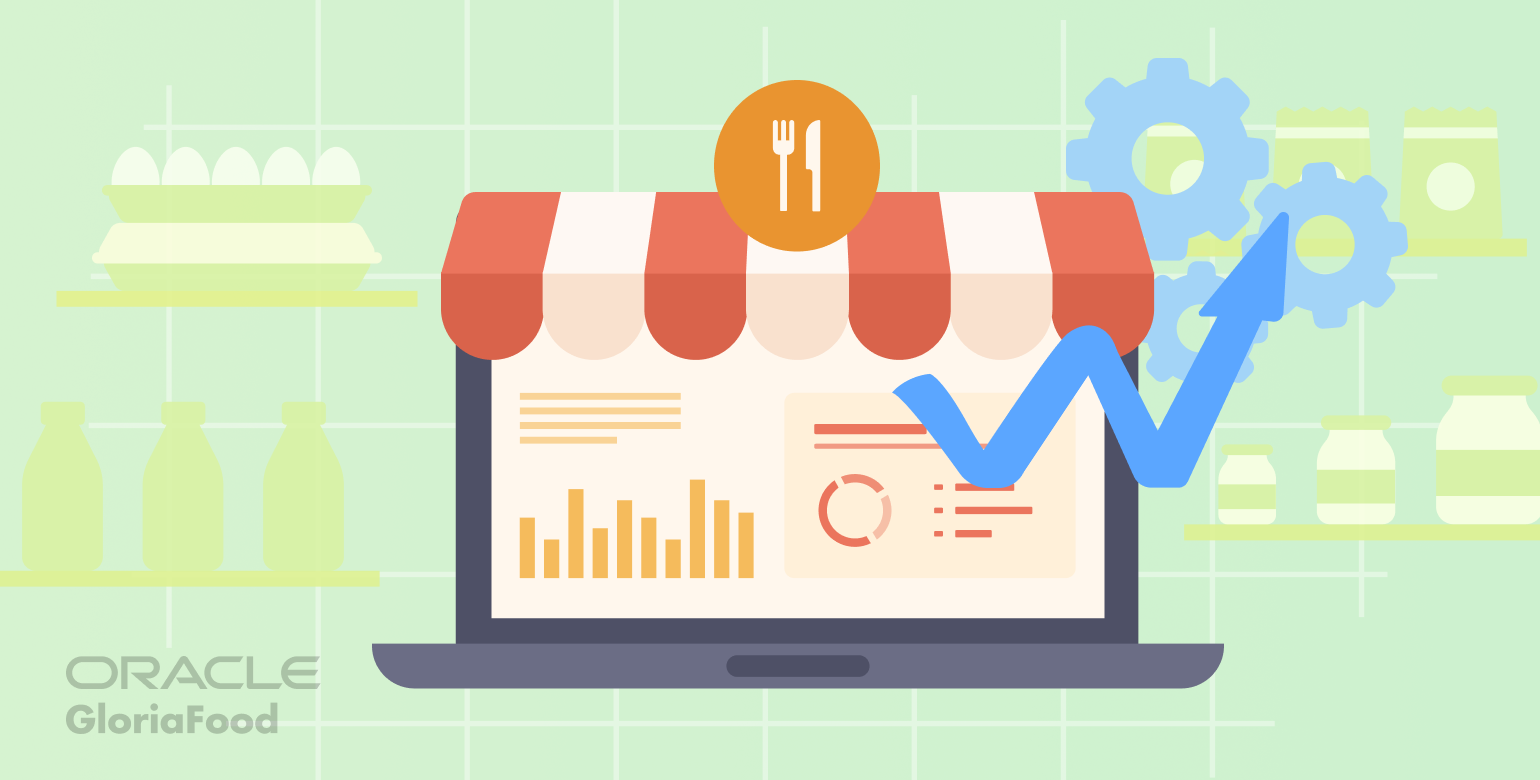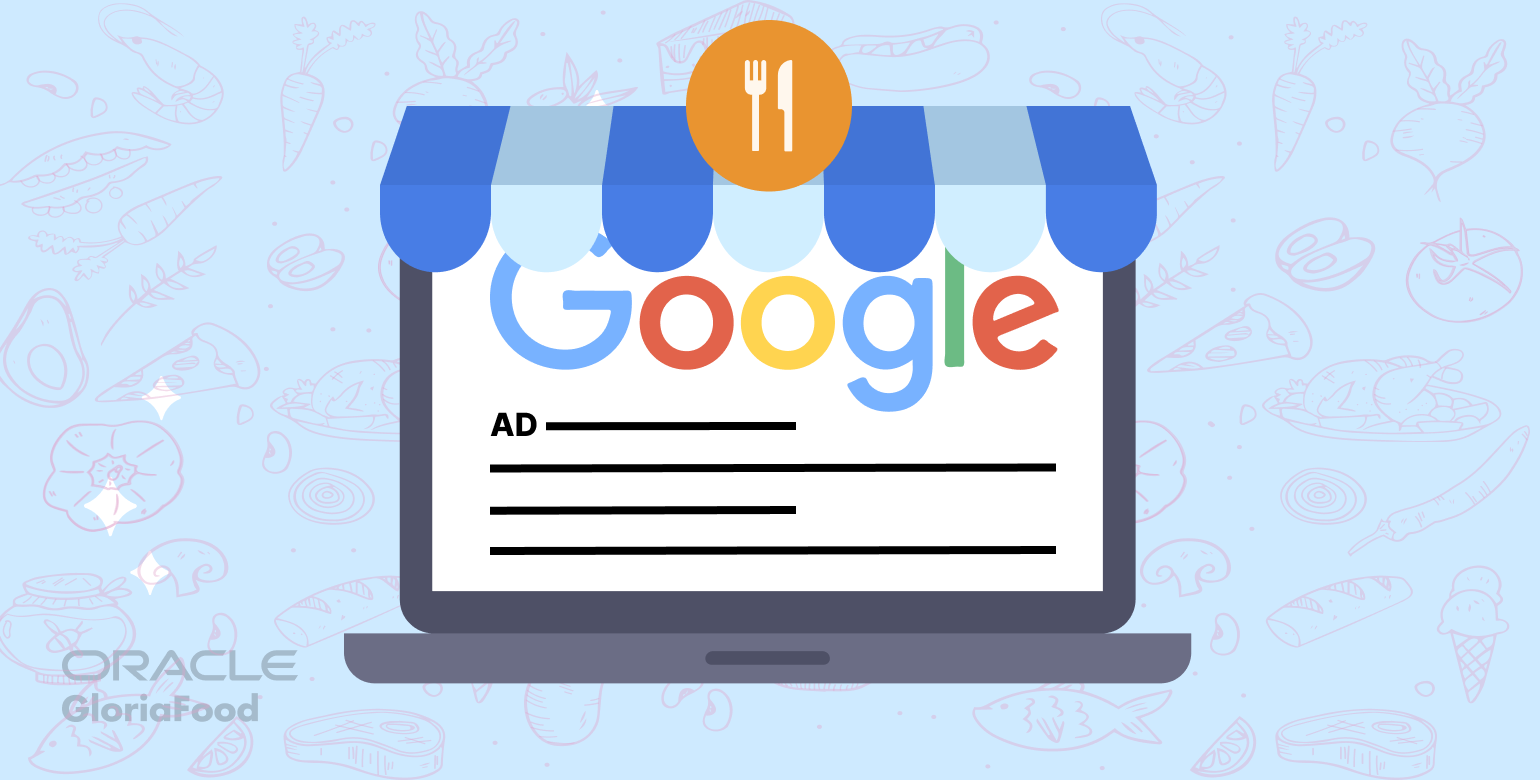- What is food cost in a restaurant?
- How to calculate food cost for a recipe?
- What is the food cost percentage method for menu pricing?
- 8 Low food cost menu items you must try
- 1. Toppings
- 2. Burgers
- 3. Breakfast foods
- 4. Salads
- 5. Pasta
- 6. Side dishes
- 7. Nose-to-tail items
- 8. Items that minimize waste
- Final Words
There are two main strategies that restaurant owners can use to increase profit: lower costs or increase sales. But why not do both to ensure your business is thriving month after month?
You can update your offerings with low food cost menu items that, while cheaper to prepare, are still going to be a hit with your customers. Check out our easy-to-implement ideas that will skyrocket your revenue:
What is food cost in a restaurant?
Before we dive in into the actual low-food-cost menu items ideas, let’s understand what food cost is. Food cost is a restaurant KPI that is expressed as a ratio between the price you pay for the ingredients necessary for food preparation and the money you make when you sell the menu items.
It can easily be mistaken with another metric used for menu pricing, the Costs of Goods Sold. The COGS measures all the inventory necessary to prepare a dish, including ingredients, electricity, water, labor, etc.
How to calculate food cost for a recipe?
To easily identify low-food-cost menu items for your restaurant, you need to be able to calculate the food cost for each recipe. The good news is that you only have to do it once when you add a new item to the menu.
You will need:
- A list of all the ingredients used in the recipe
- The total cost of each ingredient and its weight in grams
When you create the recipe, you weigh how much of the ingredients you use. Then you will simply use the rule of three to determine how much you spent on the recipe.
For example, let’s say you are preparing Pasta Carbonara. The ingredients for a portion are:
- 100 g of pasta
- 2 eggs
- 50 g guanciale
- 40 g pecorino
If you bought a 1 kg bag of pasta for $3, for the 100 g portion you spent:
Price = ($3 x 100)/1000 = 0,3
Use the same rule for all ingredients and then add it all up. That will be your food cost for the recipe.
If you want to price menu items according to the food cost, you must use this formula:
Menu item price = Cost per serving / Ideal food cost percentage
The ideal food cost percentage for healthy restaurants is usually between 25 % and 35%. It can be calculated like this:
Ideal food cost percentage = Total food costs / Total food sales
To have a better view of your prices, you should also identify your current food cost and find ways to improve if you notice a big discrepancy. Use this formula:
Actual food cost percentage = [(Beginning inventory + Purchases) – Ending inventory] / Total food sales
Ingredients’ prices will vary by country and region, but we have provided you with a general list of low-food cost menu items that will help you increase your profit.
1. Toppings
Toppings are the highest profit margin food items on every restaurant’s menu. They have a really low food cost because you use very little of the ingredients, yet you sell them at a price that makes your profit suddenly go up.
The great part is that clients also love add-ons because they get to create their perfect dish, be it a pizza, a burger, or a salad.
If you want to provide clients with customization options, we have the perfect solution: the menu creator embedded in the online ordering system from GloriaFood. You can also allow the customer to choose sizes for their dishes for more profit.
Increase your profit with low food cost menu items
Add toppings to your menu with this easy-to-use menu creator
2. Burgers
Burgers have three main ingredients: the buns, the meat, and the toppings. The meat is the only one that may have a higher food cost, the others are high-profit margin items.
While burgers are usually one of the low-food cost menu items, we have a trick you can use to up the price you sell them for. Add specialty and novelty ingredients such as:
- Truffles
- Wasabi sauce
- Shitake mayo
And change the name to something that sounds expensive and tasty such as “Gourmet Truffle Black Angus Burger.”
3. Breakfast foods
If you don’t do brunch at your restaurant, you’re missing out. It is not only a trend, it has become a client expectation and it brings in a lot of money for restaurants.
Let’s see the classic breakfast foods people order:
- Pancakes
- Waffles
- Omelets
All of these have cheap ingredients (eggs, ham, syrup, bacon, peppers, tomato, fruit) and you can easily sell them at a price even four times higher than the food cost.
4. Salads
Salad is one of the low food cost menu items not only because the ingredients are cheap, but also because you can mark it up as it is seen as health food. And people are willing to pay more for items that they perceive as healthy.
If you want to bring in more people who are preoccupied with their diet, we recommend you add nutritional information to your menu. You can do this in a couple of minutes with the menu builder from GloriaFood and the info will be listed just under the ingredients, for interested clients to see.
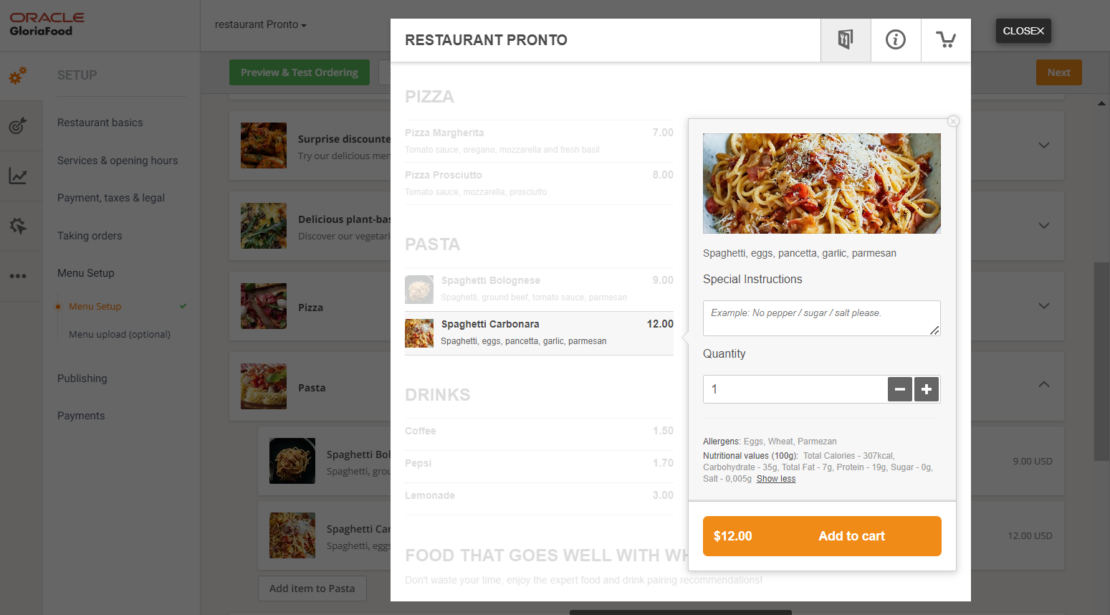
Attract more people to order by adding nutritional info to your menu
You can make unlimited changes to your online menu, for free
5. Pasta
Pasta is one the most common low-food cost menu items because the main ingredient is well, pasta. You could add any fancy ingredient such as veal, lobster, or shrimp, and the food cost would still be low because you are using them in a very small quantity.
Usually, the food cost for pasta is about 18% of the item’s selling price. And people don’t shy away from ordering it, as who doesn’t love a creamy pot of pasta?
6. Side dishes
Sides have the great advantage of being way cheaper for clients than the main dish. So, when they pay 30 dollars for a lobster, they will be tempted to accompany it with $4 fries and $6 onion rings.
But the truth is, you will be making more profit by selling the side dishes because you will pay very little for the prime ingredients.
Other clients like to order many sides and share. To get more of their money, use the same trick suggested in the burger section. Add fancy ingredients like caviar, truffle oil, or lavender and market the items as innovations.
7. Nose-to-tail items
There is a new trend taking over the restaurants that is helpful both for nature and for your budget: nose-to-tail cooking. Oftentimes, it is cheaper to buy the whole animal than selected cuts. If you don’t want to waste money, don’t throw away anything, cook every part of it.
Have your chef come up with a menu where you utilize everything, such as bone broth, pates, stews, and pie. Any ingredient can be delicious if cooked well.
There is an audience for nose-to-tail menu items, and you must find it. Take to social media to promote your concept and let people know every time you add a new dish to your menu. A mouth-watering photograph will have people lining up at your door.
8. Items that minimize waste
Keeping in line with the idea above, make the most out of your produce. How much food waste do you make every week? Fresh ingredients that don’t get used will go bad pretty fast, leading to wasted money.
How about giving another chance to things that you would usually throw away? For example, parsley stems can become aromatized parsley oil. Unused pizza dough can become an appetizer of pizza balls. Offcuts of meats can be added to delicious sandwiches.
Final Words
If you want to increase your profit while making clients happy, try out these low food cost menu items at your restaurant. Don’t forget to promote each new dish to get people interested and grow your number of orders.
- What is food cost in a restaurant?
- How to calculate food cost for a recipe?
- What is the food cost percentage method for menu pricing?
- 8 Low food cost menu items you must try
- 1. Toppings
- 2. Burgers
- 3. Breakfast foods
- 4. Salads
- 5. Pasta
- 6. Side dishes
- 7. Nose-to-tail items
- 8. Items that minimize waste
- Final Words
